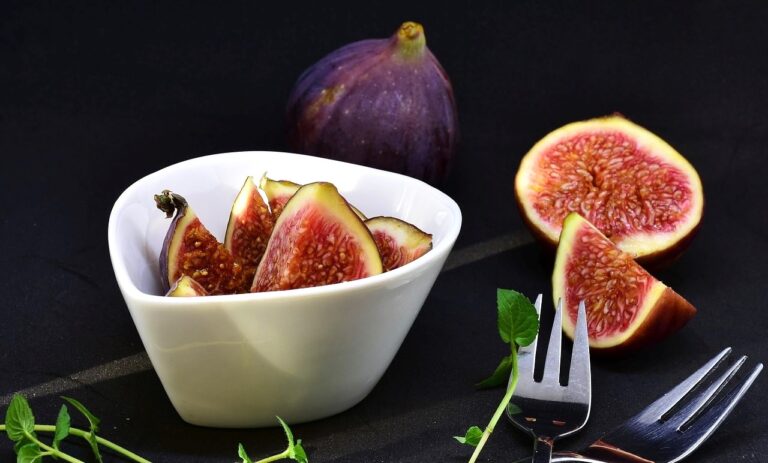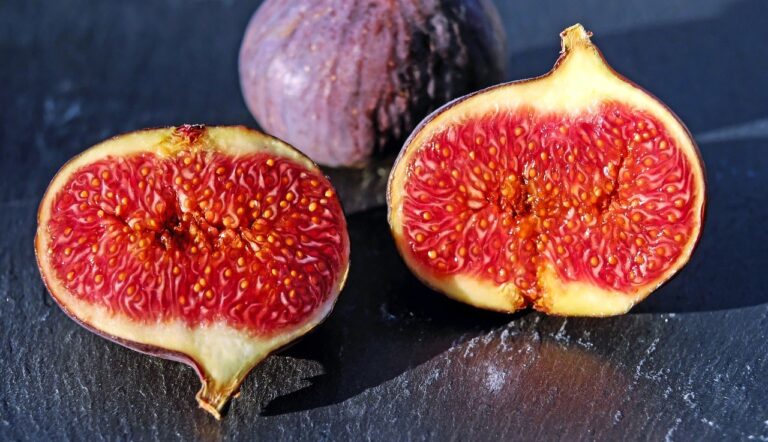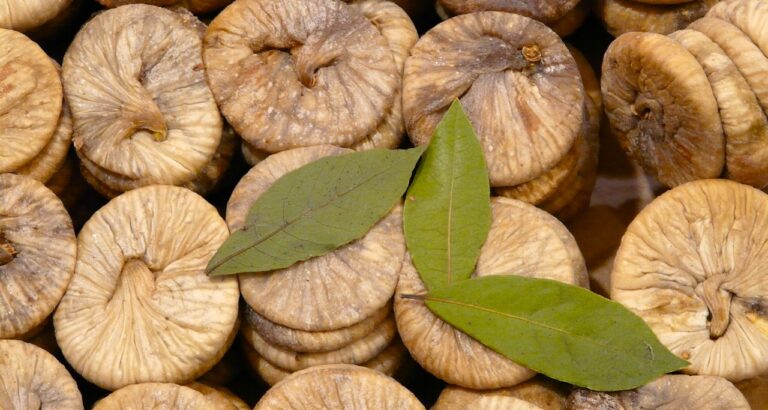The Health Benefits of Figs

The edible fig is one of the first plants that were cultivated by humans
Fall is for figs — especially if you’re looking to up your antioxidant ante and add more healthy fiber to your diet. California figs, which account for the majority of the world’s crop, are available only June through September (some other European varieties remain available through fall). They are among the most perishable fruits and must be eaten within one to two days of purchase.
Fiber-Rich
The modest fig boasts higher quantities of fiber than any other dried or fresh fruit! And, as with many fruits and vegetables, figs are a good source of flavonoids and polyphenols, plant-based antioxidants that fight free radicals in the body.
Natural Aphrodisiacs

Yet their rarity and fleeting freshness only adds to their mystique. The small, pear-shaped fruit has long been revered for its apparent aphrodisiac properties. Figs’ voluptuous shape, honeyed scent and taste, and succulent, chewy texture add to their sultry reputation, which made them the favorite fruit of Cleopatra. Flush with seeds, from 30 to 1,600 per fruit, the fig is a symbol of fertility in many cultures.
Bursting with Minerals
But figs’ supposed facility in arousing desire may be based more on their ability to promote overall well-being than on their sensory pleasures. Most notably, figs have the highest overall mineral content of all common fruits. An excellent source of potassium, figs may help to control blood pressure. Figs are also high in calcium, which protects bone density. Moreover, their potassium may reduce the amount of calcium lost as a result of high-salt diets. The fruit is also a source of iron, vitamin B6 and the trace mineral manganese.
Fiber Powerhouse
Insoluble fiber protects against colon and breast cancer, while soluble fiber helps lower blood cholesterol. Figs offer both types in one compact package. Since Americans on average eat less than half the minimum amount of dietary fiber thought to be necessary for good health, figs are a sweet and easy way to increase intake. Diets rich in fiber may also help manage weight. Additionally, figs’ fiber makes them a mild laxative.
Curative Properties

Studies show that dried figs have a phenol makeup ranging from 4 to 50 times higher than other fruits. Dried figs also contain Omega-3 and Omega-6 essential fatty acids, which may reduce the risk of coronary heart disease and improve immune function. Even the leaves of the fig tree hold curative powers; ingesting the leaves can mitigate diabetes and may even lower the need for insulin shots. Fig paste — used widely before the advent of refined sugars — makes a healthy replacement for sweeteners or fats in recipes.
Consume As You Wish

Poached in wine and served with ice cream, stuffed with goat cheese and almonds, wrapped in prosciutto, or lightly charred for bruschetta, figs are ripe for a sumptuous, seasonal tryst with either sweet or savory dishes — a delicious, healthy way to awaken desire.




